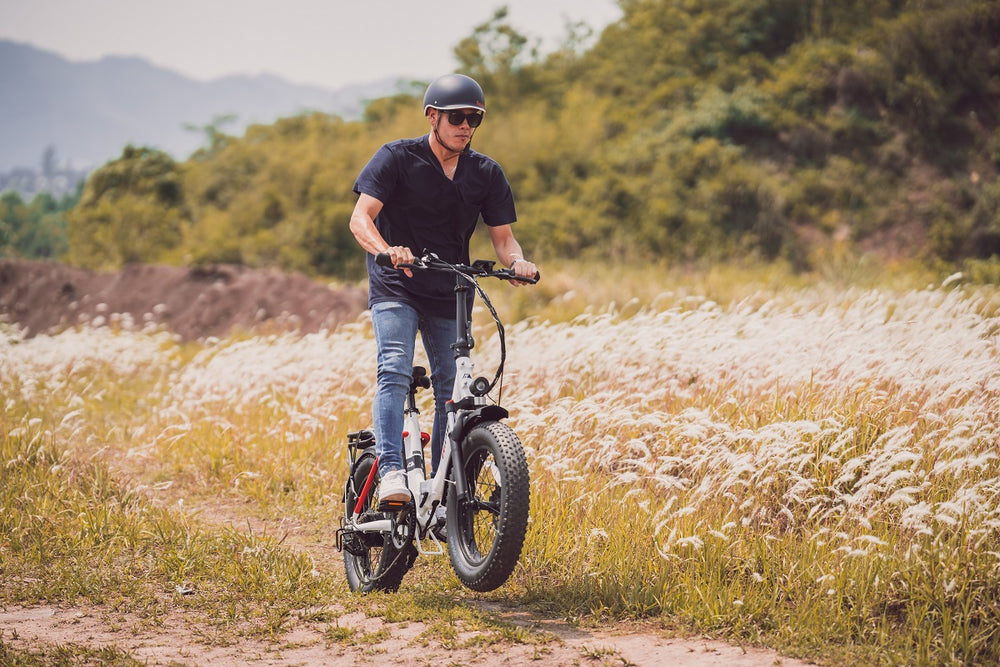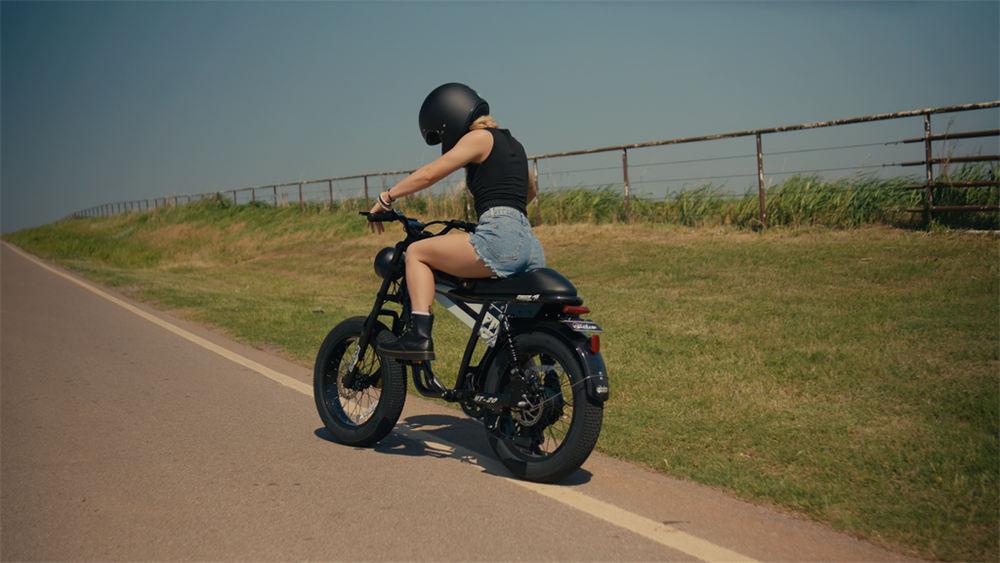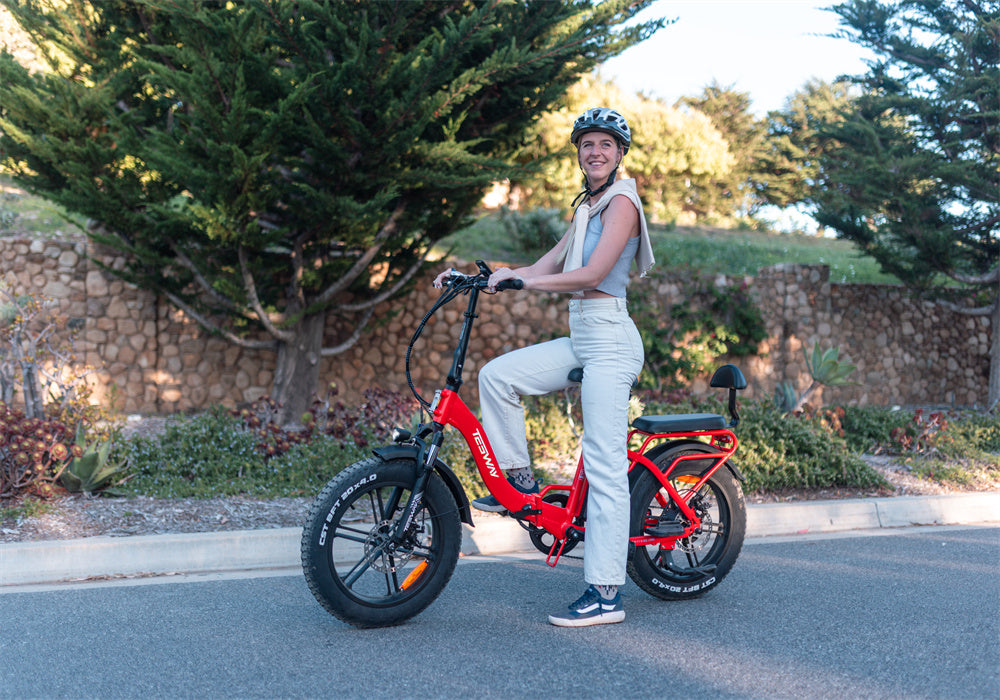Yes, fat tire bikes can be harder to pedal on some surfaces. The wider tires create more resistance, which can make pedaling more challenging compared to regular bikes.
Fat tire bikes are gaining popularity among biking enthusiasts. These bikes, known for their wide tires, offer unique benefits like better traction and stability. But many wonder if these advantages come at the cost of making the bike harder to pedal.
In this blog post, we will explore ” are fat tire bikes harder to pedal?”. We will look at various factors that influence pedaling effort. This includes terrain, tire pressure, and rider experience. By the end, you will have a clear understanding of what to expect when riding a fat tire bike.
Table of Contents
Fat Tire Bikes
Fat tire bikes offer great stability and traction, but their larger tires can make pedaling more challenging. Expect more effort, especially on smooth surfaces.
Fat tire bikes have gained popularity. Their unique design stands out. These bikes have wide tires. This feature makes them distinct.
Many riders love fat tire bikes. They offer a different biking experience. Some wonder if they are harder to pedal. Let’s explore this further.
What Are Fat Tire Bikes?
Fat tire bikes have wide tires. These tires are usually 3.8 inches or wider. They provide better traction. You can ride on sand, snow, and rough terrain. They are built to handle challenging surfaces.
History And Evolution
Fat tire bikes have an interesting history. They first appeared in Alaska. Riders needed bikes for snow and ice. Wide tires helped them ride smoothly. Over time, their design evolved. Today, they are used in various terrains.

Credit: www.hipeakbike.com
Design And Features
Fat tire bikes offer a unique riding experience due to their design and features. These bikes are known for their wide tires, robust frames, and specialized suspension systems. Let’s explore the specific design elements that affect the ease of pedaling fat tire bikes.
Tire Width And Pressure
Fat tire bikes typically have tires that are 3.8 to 5 inches wide. The wide tires provide better traction and stability on various terrains. However, they also create more rolling resistance, which can make pedaling harder.
Maintaining the right tire pressure is crucial. Lower pressure offers better grip and comfort but increases rolling resistance. Higher pressure reduces resistance, making pedaling easier. The ideal pressure depends on the terrain and rider’s weight.
Here’s a quick guide on tire pressure for different terrains:
| Terrain | Tire Pressure (PSI) |
|---|---|
| Sand | 5-10 |
| Snow | 5-15 |
| Mountain Trails | 10-20 |
| Pavement | 20-30 |
Frame And Suspension
Fat tire bike frames are built to handle rough terrains. They are usually made of durable materials like aluminum or steel. This makes them heavier than standard bike frames, which can affect pedaling effort.
Suspension systems in fat tire bikes vary. Some bikes have front suspension forks, while others have full suspension. These systems absorb shocks from rough terrains, providing a smoother ride. But they also add weight, making pedaling harder.
Here are some common frame materials and their characteristics:
- Aluminum: Lightweight, stiff, and rust-resistant.
- Steel: Strong, durable, and more comfortable.
- Carbon Fiber: Extremely light and stiff but expensive.
The right frame and suspension setup depends on your riding preferences and the terrain you plan to tackle.
Pedaling Mechanics
Fat tire bikes offer a unique riding experience. The pedaling mechanics differ from regular bikes. Understanding these differences helps in making an informed choice.
Resistance And Traction
Fat tires create more resistance. The larger surface area grips the ground better. This increases the effort required to pedal. On soft surfaces, like sand or snow, this resistance is beneficial. It prevents the tires from sinking. On hard surfaces, this extra grip can feel like a drag. It slows down the bike. But, it provides a stable ride.
Impact On Speed
Fat tire bikes are slower. The wide tires create more friction with the ground. This friction makes it harder to reach high speeds. The bike’s weight also plays a role. Fat tire bikes are heavier. This weight requires more energy to pedal fast. They are ideal for off-road adventures. Speed is not their primary focus. Stability and control are their strengths.
Terrain And Conditions
Fat tire bikes are unique. They offer a different riding experience based on the terrain and conditions. The wider tires can handle various surfaces. But how do they perform in different environments? Let’s explore two common settings: off-road and urban.
Off-road Performance
Fat tire bikes excel in off-road conditions. Their wide tires provide better grip. This is useful on loose surfaces like sand, mud, and snow. Riders can navigate tricky trails with ease. The tires absorb shocks better. This ensures a smoother ride on bumpy paths. These bikes are perfect for mountain biking adventures.
Urban And Pavement Use
In urban settings, fat tire bikes have their advantages and disadvantages. The wide tires offer a stable ride. This is good for beginners or those looking for comfort. They handle potholes and uneven pavement well. But, they are slower on smooth roads. The increased friction from the wide tires creates more resistance. This makes pedaling harder on flat surfaces. For city commuting, consider the trade-offs between stability and speed.
Here is a quick comparison:
| Terrain | Advantages | Disadvantages |
|---|---|---|
| Off-Road |
|
|
| Urban |
|
|
Physical Effort
Riding a fat tire bike requires more effort than traditional bikes. The larger tires create more friction with the ground. This can make pedaling harder. Understanding the physical effort involved helps you decide if a fat tire bike suits you.
Caloric Burn
Fat tire bikes can help burn more calories. The extra effort needed to pedal means your body works harder. This increases your heart rate. It leads to more caloric burn. This can be good for fitness goals.
Muscle Engagement
Fat tire bikes engage more muscle groups. They require more leg strength. Your core also works harder to maintain balance. This can improve overall muscle tone. It makes fat tire biking a great full-body workout.

Credit: qiolor.com
Comparisons With Other Bikes
When considering whether fat tire bikes are harder to pedal, it’s useful to compare them with other types of bicycles. Understanding how they stack up against mountain bikes and road bikes can provide a clearer picture.
Mountain Bikes
Fat tire bikes and mountain bikes share some similarities. Both are designed for off-road use. Yet, there are key differences in how they ride.
- Tire Width: Fat tire bikes have tires that are 3.8 inches or wider. Mountain bike tires are typically 2.5 inches or less.
- Surface Contact: More tire surface touches the ground on fat tire bikes. This can make pedaling feel heavier.
- Weight: Fat tire bikes often weigh more. This extra weight can make pedaling harder.
In general, mountain bikes are easier to pedal on rough terrain. Their lighter weight and narrower tires help with this.
Road Bikes
Comparing fat tire bikes to road bikes shows even more differences. Road bikes are designed for speed and smooth surfaces.
- Tire Width: Road bikes have very narrow tires, usually less than 1 inch. This reduces rolling resistance.
- Weight: Road bikes are much lighter than fat tire bikes. This makes them easier to pedal on paved roads.
- Speed: Road bikes are built for speed. Their design allows for fast and efficient pedaling.
For long distances on smooth roads, road bikes are far easier to pedal. The narrow tires and light frame make a big difference.
Advantages Of Fat Tire Bikes
Fat tire bikes have gained popularity for good reasons. These bikes come with several advantages that make them unique and desirable. From better stability to unmatched versatility, fat tire bikes offer a range of benefits that enhance the riding experience.
Stability And Control
Fat tire bikes provide incredible stability. Their wide tires offer a larger contact area with the ground. This makes it easier to maintain balance, even on uneven surfaces. Riders feel more secure, reducing the risk of falls.
The added control is another key benefit. Fat tires improve grip on various terrains. Sand, snow, or mud, these bikes handle it all. This ensures a smoother and safer ride, regardless of the path you choose.
Versatility
Fat tire bikes are highly versatile. They perform well in different environments. Whether on trails, beaches, or snowy paths, these bikes are reliable. Riders do not need to switch bikes for different terrains.
Their versatility extends to weather conditions. Rain or shine, fat tire bikes provide a consistent ride. This makes them an excellent choice for riders who enjoy year-round cycling adventures.

Credit: teswaybike.com
Challenges Of Fat Tire Bikes
Fat tire bikes offer unique benefits for off-road cycling. But, they also come with challenges. These bikes can be harder to pedal. Understanding these challenges can help you decide if a fat tire bike is right for you.
Weight Considerations
Fat tire bikes are heavy. The thick tires add extra weight. This makes them harder to pedal on flat or smooth surfaces. You need more effort to keep the bike moving. For long rides, this can be tiring.
Heavier bikes can also be slower. You might find it hard to keep up with others. The extra weight makes uphill climbs more difficult too. If you enjoy speed, a fat tire bike might not be the best choice.
Maintenance And Upkeep
Maintaining a fat tire bike can be demanding. The wide tires require more attention. You need to check tire pressure often. Keeping them at the right pressure is crucial for a smooth ride.
The tires also wear out faster. Replacing them can be expensive. The large surface area collects more dirt and debris. Cleaning the bike takes more time. Regular maintenance helps ensure a longer lifespan for your bike.
These challenges are part of owning a fat tire bike. They are not impossible to overcome. But, they do require more effort and commitment.
Frequently Asked Questions
Are Fat Tire Bikes Harder To Pedal?
Fat tire bikes can be harder to pedal due to their wider tires. These tires create more rolling resistance. However, they offer better stability and traction on rough terrains.
Do Fat Tire Bikes Require More Effort?
Yes, fat tire bikes require more effort to pedal, especially on smooth surfaces. Their wider tires create more friction. This makes them slightly harder to pedal compared to regular bikes.
Are Fat Tire Bikes Suitable For Beginners?
Fat tire bikes are suitable for beginners. They offer better stability and control. This makes them a good choice for new cyclists, especially on uneven terrains.
Can Fat Tire Bikes Handle All Terrains?
Yes, fat tire bikes are designed to handle various terrains. They perform well on snow, sand, and rocky paths. Their wide tires provide excellent traction and stability on these surfaces.
Conclusion
Fat tire bikes can be harder to pedal on smooth roads. But, they excel on rough terrains. Their wider tires offer better balance and grip. This makes them ideal for off-road biking. Always consider your riding environment. Choose the bike that fits your needs best.
Test different bikes to find your comfort zone. Riding should be enjoyable and suited to your style. Keep exploring and happy biking!

